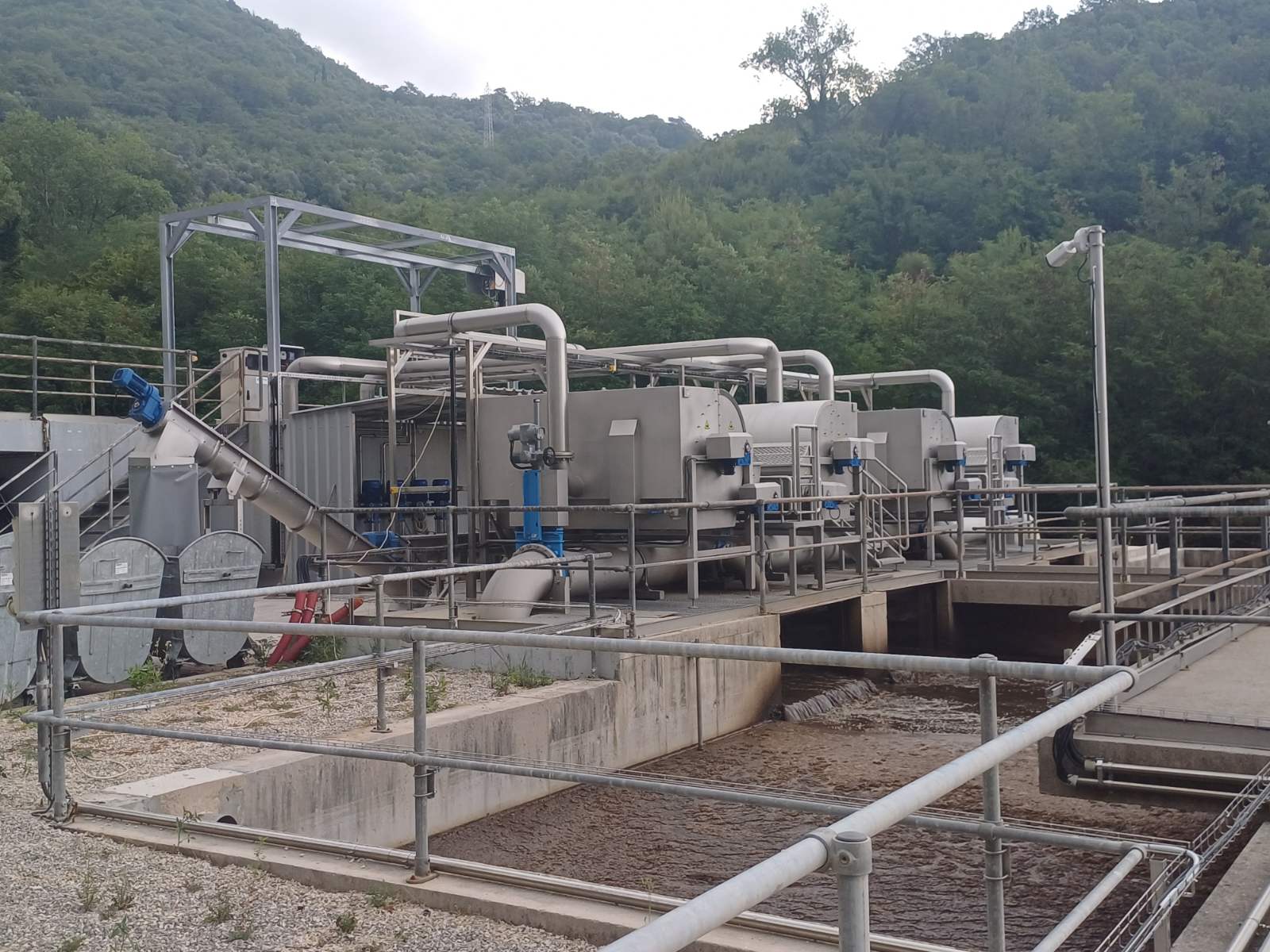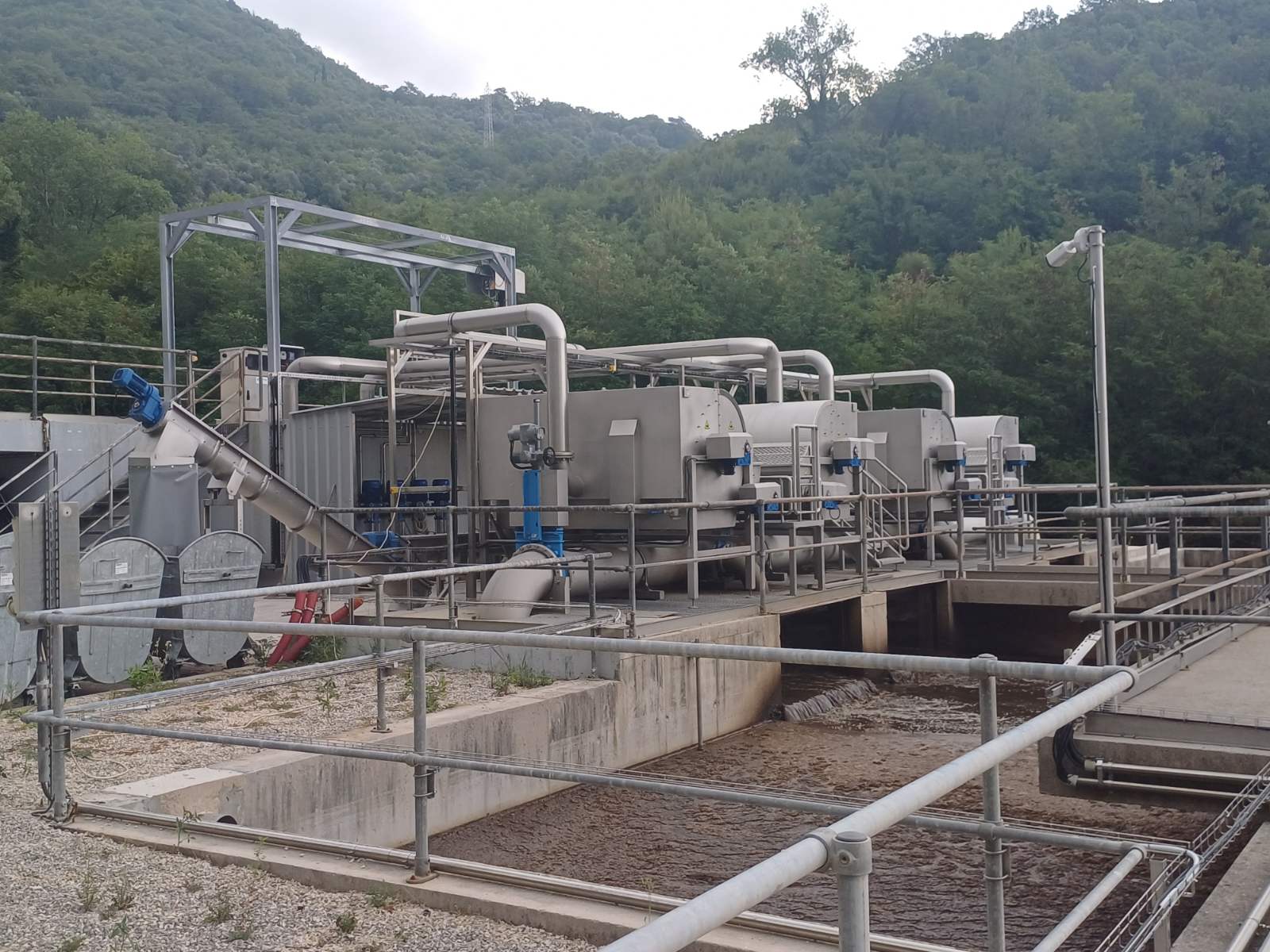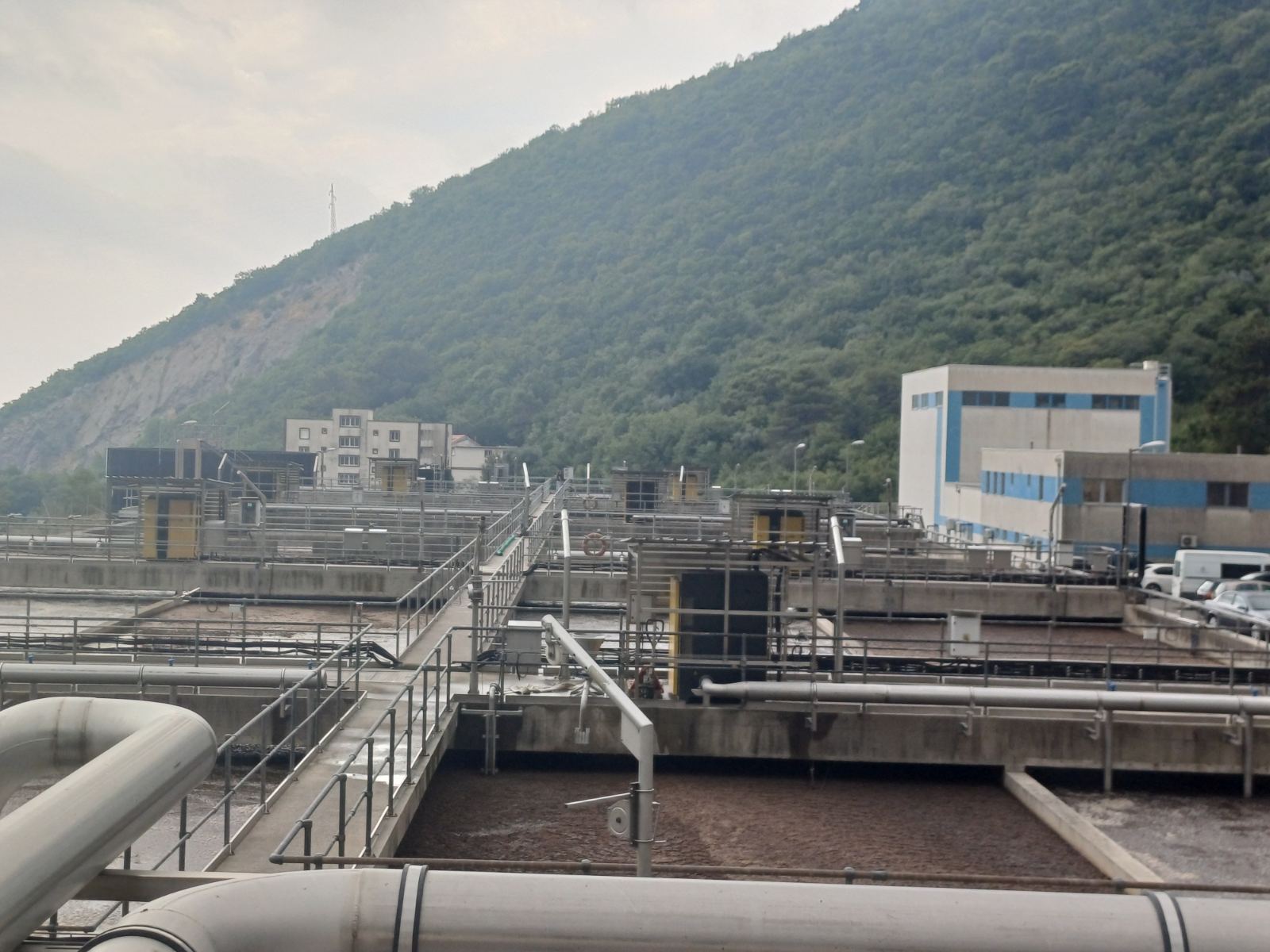WWTP Budva
Water line
The waste water that comes to the treatment plant goes through several treatments and stages. Mechanical treatment is performed first, followed by biological purification, chemical removal of phosphorus and sedimentation before final discharge.
Mechanical treatment
Working with grids
Purification begins with mechanical treatment, where coarse and inert materials larger than 6 mm are first removed on automatic grates. The waste from the grates is then washed with water, dried, pressed and collected in containers, and then handed over to the waste collector for further disposal.
Sand and grease removal pool
Sand and grease removal takes place in a closed pool. The pool is aerated - air is blown in. The sand settles at the bottom of the pool, from where it is extracted by pumps and collected in troughs, washed, dried and collected in containers, and then handed over to the waste collector for further disposal. Fats are collected on the surface in chambers from which, after filling, they are drained and handed over to the waste collector for further disposal.
Biological purification
Biological treatment of waste water takes place through the process with activated sludge. During this process, wastewater is intensively mixed with aerated and biologically active sludge (which basically consists of bacteria and microorganisms). In an aerated environment in the presence of bacterial mass, substances such as carbon, nitrogen and phosphorus compounds are removed from waste water.
Chemical treatment
After biological treatment, and if necessary, chemicals are dosed for adequate phosphorus removal.
Next are circular clarifiers (diameter 36 m) in which the sludge is separated from the treated water under the influence of gravity, and the purified water is discharged through the outlet chamber into the gravity pipeline and then into the Adriatic Sea.
Chemical treatment
Final clarifier
Output water control
Before the final discharge, the purified water is controlled in a manner prescribed by law.
On-line (continuous) control includes monitoring:
- Waste water flow (m3);
- pH values;
- Temperatures
- Conductivity
Laboratory control includes daily physical and chemical analyzes of waste water samples.
Sludge line
Sludge that represents an excess and needs to be removed from the system is stored in a sludge tank with a volume of approx. 1,550 m3.
Before dehydrating the sludge on chamber filter presses, the sludge is mixed with chemicals (lime and iron salts) in special tanks. The sludge cake, which is obtained after dehydration of the sludge on the presses, is deposited in containers and handed over to the waste processor for further disposal.

.jpg)
.jpg)
.jpg)



.jpg)
.jpg)
.jpg)
.jpg)